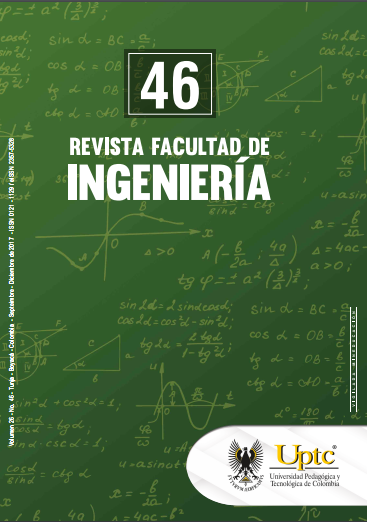Abrasive wear in wear plates and hard coatings applied by welding with shielded electrode

Abstract
Performance against abrasive wear was evaluated (in compliance with the ASTM G-65 standard) for both wear plates and hard coatings applied by electric welding. The characterization of the coatings was achieved by using hardness tests, optical microscopy and scanning electron microscopy (SEM). Although it was observed a direct correlation between hardness and wear resistance, a linear growth pattern was not followed. Besides the information from the hardness tests, data regarding the distribution and shape of the carbides in the welding bead are also necessary to choose the hard coating applied by welding, to protect against abrasive wear. Base metal and coatings had satisfactory joint, due to their dilution; the first welding layer had less hardness than the third welding layer.
Keywords
Abrasion, Coating, Plates, SMAW, Tribology, Wear, Weld.
References
- V. Jankauskas, et al. “Effect of WC grain size and content on low stress abrasive wear of manual arc welded hardfacings with low-carbon or stainless steel matrix,” Wear, vol. 328-329, pp. 378-390, 2015. DOI: http://doi.org/10.1016/j.wear.2015.02.063. DOI: https://doi.org/10.1016/j.wear.2015.02.063
- M. Woldman, et al. “Investigating the influence of sand particle properties on abrasive wear behavior,” Wear, vol. 294-295, pp. 419-426, 2012. DOI: http://doi.org/10.1016/j.wear.2012.07.017. DOI: https://doi.org/10.1016/j.wear.2012.07.017
- T. Bremerstein, et al. “Wear of abrasive media and its effect on abrasive flow machining results,” Wear, vol. 342-343, pp. 44-51, 2015. DOI: http://doi.org/10.1016/j.wear.2015.08.013. DOI: https://doi.org/10.1016/j.wear.2015.08.013
- W. Pérez, et al. “Desgaste abrasivo de cuchillas de arado rotativo en un suelo franco arenoso,” Dyna, vol. 77 (162), pp. 105-114, 2010.
- R. Zahiri, et al. “Hardfacing using ferro-alloy powder mixtures by submerged arc welding,” Surface & Coatings Technology, vol. 260, pp. 220-229, 2014. DOI: http://doi.org/10.1016/j.surfcoat.2014.08.076. DOI: https://doi.org/10.1016/j.surfcoat.2014.08.076
- V. E. Buchanan, et al. “A comparison of the abrasive wear behaviour of iron-chromium based hardfaced coatings deposited by SMAW and electric arc spraying,” Wear, vol. 264, pp. 542-549, 2008. DOI: http://doi.org/10.1016/j.wear.2007.04.008. DOI: https://doi.org/10.1016/j.wear.2007.04.008
- K. Singh, et al., “Microstructure evolution and abrasive wear behavior of D2 steel,” Wear, vol. 328-329, pp. 206–216, 2015. DOI: http://doi.org/10.1016/j.wear.2015.02.019. DOI: https://doi.org/10.1016/j.wear.2015.02.019
- N. Ojala, et al. “Effects of composition and microstructure on the abrasive wear performance of quenched wear resistant steels,” Wear, vol. 317, pp. 225-232, 2014. DOI: http://doi.org/10.1016/j.wear.2014.06.003. DOI: https://doi.org/10.1016/j.wear.2014.06.003
- O.N. Cora, et al. “Die wear in stamping of advanced high strength steels – Investigations on the effects of substrate material and hard-coatings,” Tribology International, vol. 52, pp. 50–60, 2012. DOI: http://doi.org/10.1016/j.triboint.2012.02.016. DOI: https://doi.org/10.1016/j.triboint.2012.02.016
- S. Huang, et al., “Microstructures and properties of Ni based composite coatings prepared by plasma spray welding with mixed powders,” Int. J. of Refractory Metals and Hard Materials, vol. 52, pp. 36-43, 2015. DOI: http://doi.org/10.1016/j.ijrmhm.2015.05.011. DOI: https://doi.org/10.1016/j.ijrmhm.2015.05.011
- J. L. Marulanda Arévalo, V. M. Burbano, J. A. Peláez, “Análisis de soldabilidad de aceros inoxidables con aceros de medio y bajo carbono por SMAW,” Revista Facultad de Ingeniería, vol. 22 (35), pp. 91-100, 2013. DOI: http://doi.org/10.19053/01211129.2517. DOI: https://doi.org/10.19053/01211129.2517
- V. Jankauskas, et al. “Analysis of abrasive wear performance of arc welded hard layers,” Wear, vol. 265, pp. 1626-1632, 2008. DOI: http://doi.org/10.1016/j.wear.2008.03.022. DOI: https://doi.org/10.1016/j.wear.2008.03.022